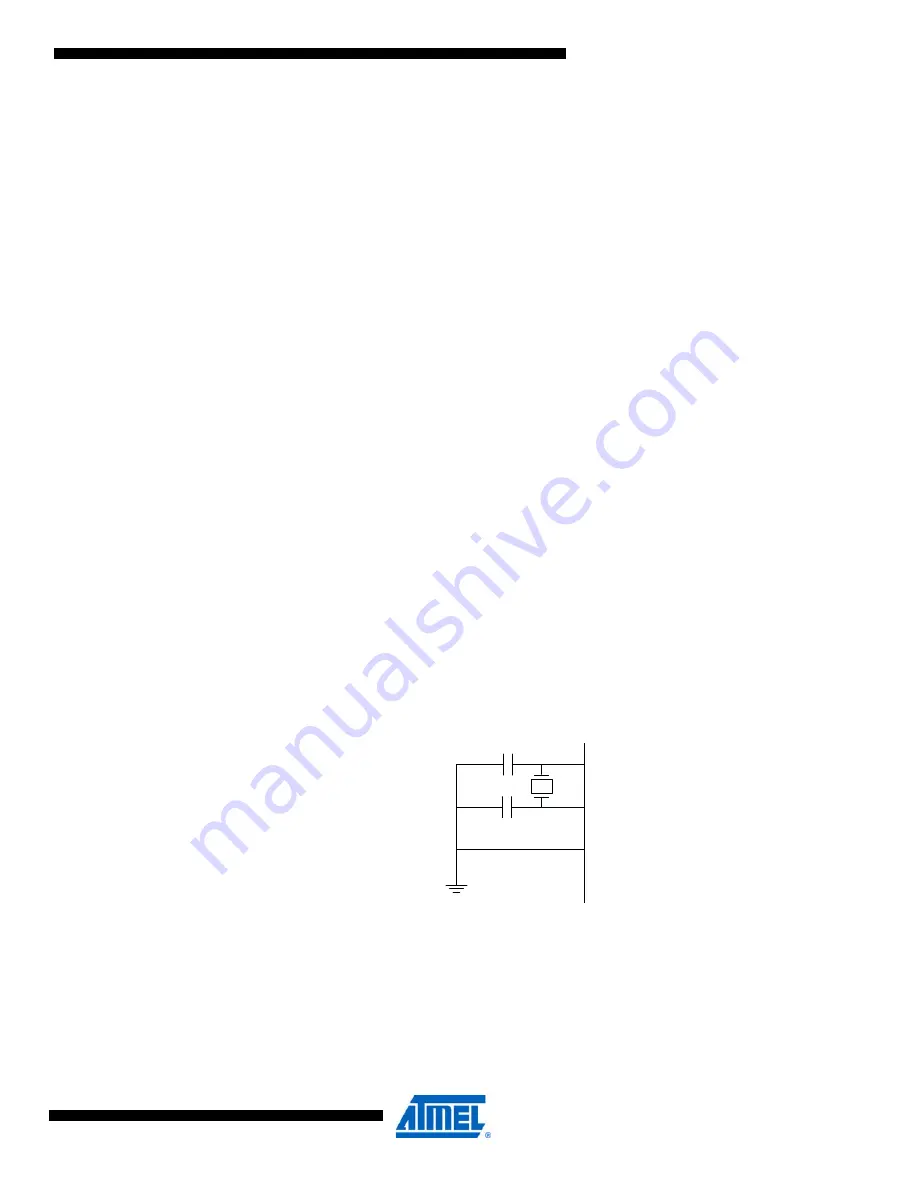
86
8331B–AVR–03/12
Atmel AVR XMEGA AU
7.4.1.2
32.768kHz Calibrated Oscillator
This oscillator provides an approximate 32.768kHz clock. It is calibrated during production to
provide a default frequency close to its nominal frequency. The calibration register can also be
written from software for run-time calibration of the oscillator frequency. The oscillator employs a
built-in prescaler, which provides both a 32.768kHz output and a 1.024kHz output.
7.4.1.3
32MHz Run-time Calibrated Oscillator
The 32MHz run-time calibrated internal oscillator is a high-requency oscillator. It is calibrated
during production to provide a default frequency close to its nominal frequency. A digital fre-
quency looked loop (DFLL) can be enabled for automatic run-time calibration of the oscillator to
compensate for temperature and voltage drift and optimize the oscillator accuracy. This oscilla-
tor can also be adjusted and calibrated to any frequency between 30MHz and 55MHz. The
production signature row contains 48 MHz calibration values intended used when the oscillator
is used a full-speed USB clock source.
7.4.1.4
2MHz Run-time Calibrated Oscillator
The 2MHz run-time calibrated internal oscillator is the default system clock source after reset. It
is calibrated during production to provide a default frequency close to its nominal frequency. A
DFLL can be enabled for automatic run-time calibration of the oscillator to compensate for tem-
perature and voltage drift and optimize the oscillator accuracy.
7.4.2
External Clock Sources
The XTAL1 and XTAL2 pins can be used to drive an external oscillator, either a quartz crystal or
a ceramic resonator. XTAL1 can be used as input for an external clock signal. The TOSC1 and
TOSC2 pins is dedicated to driving a 32.768kHz crystal oscillator.
7.4.2.1
0.4MHz - 16MHz Crystal Oscillator
This oscillator can operate in four different modes optimized for different frequency ranges, all
within 0.4MHz - 16MHz.
shows a typical connection of a crystal oscillator or
resonator.
Figure 7-2.
Crystal oscillator connection.
Two capacitors, C1 and C2, may be added to match the required load capacitance for the con-
nected crystal.
7.4.2.2
External Clock Input
To drive the device from an external clock source, XTAL1 must be driven as shown in
. In this mode, XTAL2 can be used as a general I/O pin.
C1
C2
XTAL2
XTAL1
GND















































